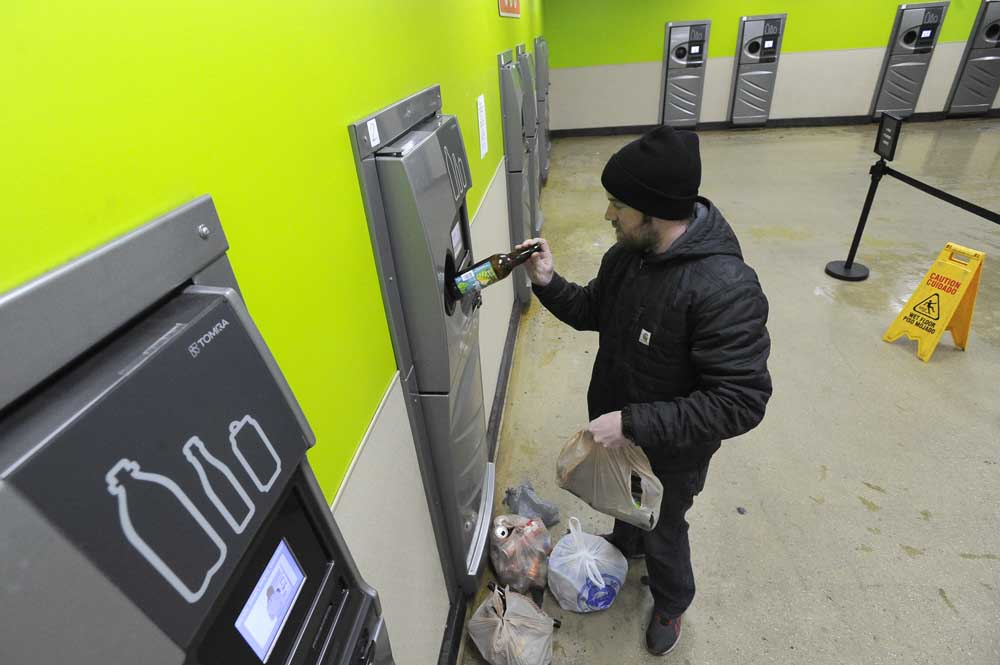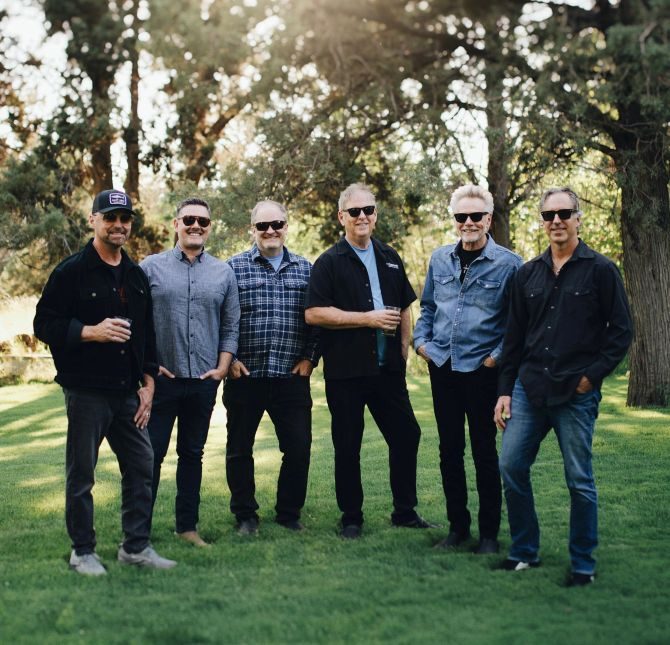Bottle redemption centers report spike in use in Bend and beyond
Published 12:00 am Saturday, July 21, 2018

- Sean Lewis of Bend works on recycling some of his cans and bottles at the BottleDrop Redemption Center in Bend on Thursday, Dec. 28, 2017. (Ryan Brennecke/Bulletin file photo)
The percentage of bottles and cans going to Bend’s redemption center has skyrocketed in the past year, part of a larger statewide trend.
At the Bend BottleDrop, located at 755 NE Second St., more than 3 million additional glass bottles, plastic containers and aluminum cans were redeemed in the first quarter of 2018 compared to the first quarter of 2017. This was an increase of more than 60 percent, according to numbers from the Oregon Beverage Recycling Cooperative, a nonprofit comprised of beverage distributors.
Joel Schoening, community relations manager for the cooperative, which manages Oregon’s BottleDrop centers, said many factors played into the spike, including more types of redeemable containers in 2018, but he said much of the trend has to do with the deposit doubling last in April, from 5 cents to 10 cents.
The statewide numbers show a big jump as well. In 2017, the redemption rate — the percentage of containers included under Oregon’s bottle bill that are returned to a redemption center in exchange for a deposit — increased by 23 percent after April, when the deposit increased.
Not only do higher rates of redemption help keep bottles and cans out of the garbage, but they also help mitigate the global changes coming to certain types of recycling, according to Peter Spendelow, recycling specialist for the Oregon Department of Environmental Quality.
“It produces the highest-quality material we can get out of plastics,” Spendelow said.
The Oregon bottle bill, initially passed in 1971, added a 5-cent deposit to the sale of each bottle, which could be redeemed by returning the bottle. In 2016, the Oregon Liquor Control Commission announced that the deposit would be increased to 10 cents, after redemption rates fell below the levels set by the Oregon Legislature.
The increase in redemption was fairly immediate once the new rate went into place, according to Schoening. The statewide rate increased from 59 percent during January through March, to 82 percent for the rest of the year. Overall, more than 230 million additional bottles and cans were redeemed statewide in 2017 than in 2016.
“We’ve been busy,” he said.
Schoening added that the cooperative recorded 138 million pounds of material in 2017. The cooperative began accepting a higher selection of material at the beginning of 2018, and Schoening said he expects the redemption rate to increase again this year.
The spike in container redemption comes at a good time for Oregon’s recycling industry. About a year ago, China, which had been a major destination for a lot of the mixed recycling produced in the United States, announced significant restrictions on what materials it would import in 2018, including post-consumer plastics. Additionally, the country reduced the level of contamination it would accept in other imported recyclables.
In Oregon, this shift prompted changes from a number of local governments, as recycling companies tried to find new foreign and domestic markets for their material. As of last week, 26 recycling service providers had received permission from Oregon DEQ to dispose of material that had once been recyclable, and more than 11,000 tons have been disposed since last September.
Spendelow noted that the market for recyclables has begun to stabilize and the worst appears to be over. However, he added that many communities, including Salem and Eugene, have scaled back the materials they can recycle, as service providers simply can’t afford to transport and process materials at deflated prices.
He added that China is mulling additional restrictions on international imports in the future.
“If anyone had any hope that China would reverse course, they’re going the other direction,” Spendelow said.
By contrast, Schoening said all of the material processed at redemption centers gets recycled domestically. Plastic bottles redeemed in Bend are sent to a plant in Redmond, where they’re compacted and shipped to the ORPET recycling facility in St. Helens, according to Schoening.
Glass is sent to northeast Portland and sorted by color. Schoening added that aluminum is compacted and sent to Alabama.
Spendelow added that the cooperative is able to recycle more efficiently because it processes far fewer materials. While curbside recycling is often buried amid a much larger amount of paper and sorting can be inefficient, the redemption center can sort bottles and cans by bar code and send them to be processed with the same type of material
“Because it’s so segregated, it produces good, high-quality materials,” Spendelow said.
The recycling cooperative is still expanding. Currently, there are 26 standalone redemption centers in the state, and the organization hopes to eventually establish 45 across the state.
There are redemption centers in Bend and Redmond, along with an express location in the Rays Food Place in Sisters, but Schoening said they may expand their footprint in Central Oregon in the next five years.
“Prineville is on our list,” he said.
— Reporter: 541-617-7818, shamway@bendbulletin.com








